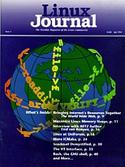Exciting Possibilities for the Linux Community
Still, the greatest potential of the Web lies with the Internet-connected Linux community. As Linux continues to prove itself to Internet users, the audience for a Linux Web will grow. By distributing data around the world, enormous amounts of information can be conveniently accessed from any Linux machine. There are already a number of Web servers which have manual pages and info files on-line. Hook into the Web and save space.
The first possibility is for manual pages and info pages. This infrequently accessed information can be viewed via the Web instead of storing copies on every machine. There are already a number of Web servers which have manual pages and info files on-line. Hook into the Web and save space.
Using FTP to access files can be difficult for novice users. A Web browser provides a friendly interface for getting files from FTP sites. Common FTP sites can appear as links on a Web page. Newsgroups, also, can be accessed via the Web. Hypertext links between followups are automatically created.
Subscribing to mailing lists can be automated. Using fill-in forms, users could select links to subscribe and unsubscribe. In the same way, they could register with Linux User Counter.
To better bring the Linux community together, a Web server can be configured so that each user has a home page of information about themselves. A tree of Linux information can be developed, right down to individuals. New Linux users would register themselves, and their home page, with some local server. Every new local server would register itself with a central server. Now the location and interests of each Linux user are easily available.
Lastly, there is potential for information beyond mere man pages. Linux is extraordinary in the quantity and quality of online information available. Because of the contributions of groups like the Linux Documentation Project, information about nearly every aspect of Linux use are available. All of these manuals, information sheets, and FAQs can be made available on the Web.
What makes this possibility so exciting is that each manual can be stored in one place—the author’s home site. So when a document is updated, the author has only one central location the change it. Although the documents would actually be scattered around the world, to the Web user they would all appear on one easy-to-locate Web page. The Web provides an optimal system for both authors and users.
The World Wide Web is still in its infancy. The first half of 1994 saw triple-digit growth in Web traffic. By encompassing older systems of information access, like gopher, the Web guaranteed instant compatibility.
Native Web information is exploding. Through the Internet and through CD-ROM distribution, the Linux community is finding many new and creative uses for this flexible technology. No doubt more and better uses will be forthcoming. It is certain that the phenomenal growth of the Web will continue.
Bernie Thompson ran the PSU Linux WWW during its 3-month life span in early 1994



Loading Comments